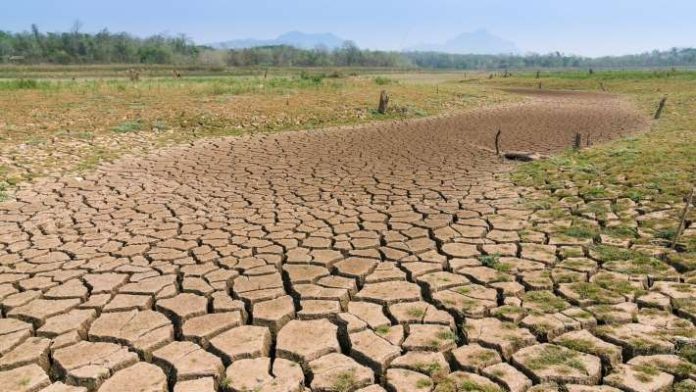Water scarcity is a significant threat that could bring countries and economies to a halt in the next decade. South Africans in the Western Cape witnessed life with insufficient water supply when the region faced a crippling drought between 2016 and 2018. This ‘Day Zero’ scenario could soon be the reality for another part of the country that is experiencing severe water deficits: Nelson Mandela Bay (NMB).
It has been widely reported that a severe drought has depleted dams in the NMB municipality, which is made up of Gqeberha, Kariega and Despatch. The metro is home to around 1.3 million people who are now at risk of having their taps run dry within the next few weeks with a possibility that Day Zero may also affect other areas outside the Nelson Mandela Bay Municipality.
According to the latest report by the Intergovernmental Panel on Climate Change, South Africa and other nations on the continent are among those most vulnerable to food and water insecurity caused by, amongst others, extreme weather events.
Considering this, Standard Bank Insurance is advising those affected to take preventative steps to help protect what matters most in the face of drought conditions.
Collection of water at water points
Should a ‘Day Zero’ arrive, Dr Hardy Ncube from Standard Bank Insurance advises consumers to, if possible, leave all valuables at home when collecting water at collection points. “Parking your car and walking far distances may leave you vulnerable to theft. Ensure that all valuables are locked away out of plain sight should you leave your vehicle parked when collecting water.”
Dr Ncube adds that consumers must take the necessary precautions to keep the water containers clean to avoid health risks. “Consider boiling drinking water to remove impurities.”
Pool care
Homeowners with pools on their properties who backwash their pools regularly to keep the pool water clear may be surprised to learn that every backwash of two to three minutes can use between 200 to 900 litres of water. A water-wise solution is to investigate getting a poolside tank, which cleanses backwash water and returns the water safely to the pool.
“Swimming pools are designed to be filled with water all the time. In the event of water rationing or outages, the walls, tiles and pipes could be damaged and/or crack if they are left exposed and without water. And this type of damage is typically not covered by your home and buildings insurance.”
Dr Ncube advises homeowners to consider the following checklist to help protect their pool, reduce water wastage, and insurance risk:
Pool dos:
- Where possible, shield the pool with a plastic cover. This will reduce the evaporation rate of the water and buy some time until your pool can be filled
- Implement smart use of rainwater. Where possible, people residing in affected areas should plan and capture rainwater to use during drought.
- Know your pool type. Most pools are either Marbelite or Fibreglass. Fibreglass pools need the water weight to prevent them from becoming damaged or deformed. Marbelite pools, if exposed to the elements for an extended period, could start cracking, causing your pool shell to leak through to the cement foundation.
- Consider switching off the pool pump if the water level drops below the weir to prevent the pump from pulling in air and running dry.
Pool don’ts:
- Do not use grey water, which is made up of bath, shower, bathroom sink, kitchen sink and washing machine water into your pool as the chemicals in it can cause harm to the surface of the pool, the pump and pipes. Borehole or rainwater can safely be used.
- Should a pool be emptied entirely, the surface can crack and in some cases the pool shell can lift out of the ground without the weight of the water to keep it down. The best thing to do is to try and keep it filled as far as possible.
- Do not run the pump dry/without water, as it will damage the pump.
“Homeowners are encouraged to take all reasonable precautions to safeguard against loss or damage to their swimming pools. This includes measures such as installation of suitable, purpose-built pool coverings as well as considering using alternate water sources to maintain the water level of swimming pools where possible. This could include using rainwater storage tanks and/or diverting water run-off from gutters directly into the swimming pool,” says Dr Ncube.
Taps and pipes
Water rationing or restrictions can affect degraded or worn pipes and connections. “Where possible, inspect connections and have water leaks fixed. It is important to inspect your property regularly to identify burst or leaking pipes. Also ensure that all taps are closed when water rationing takes place. Resulting damage from taps left open will not be covered by your insurer should the water rationing end,” explains Dr Ncube.
Protect your geyser
It is advisable to switch off your geyser during planned periods of water rationing or water outages. As there will most likely be no water in the geyser during the outage, the electric element of the geyser will be on without water, which will increase the chances of having a burst geyser, or damage to the element.
Precautions for businesses
Farmers and commercial property owners should consult with their insurance providers about the impact of the drought and water outages, depending on their individual insurance requirements.








